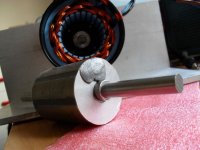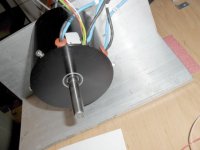12p3phPMDC
1 kW
- Joined
- Mar 16, 2009
- Messages
- 462
Burtie,
I was wondering about the back EMF generated by the Astro with distributed windings.
Not trying to be a bother, but, Would it be too much trouble to ask if you would to spin the Astro with a drill and scope/monitor
the phase leads to see what the waveform looks like.
It appears to be a double hump sinuisoid from watching your video....but seperating the controller waveforms would help see the raw BEMF.

I was wondering about the back EMF generated by the Astro with distributed windings.
Not trying to be a bother, but, Would it be too much trouble to ask if you would to spin the Astro with a drill and scope/monitor
the phase leads to see what the waveform looks like.
It appears to be a double hump sinuisoid from watching your video....but seperating the controller waveforms would help see the raw BEMF.







